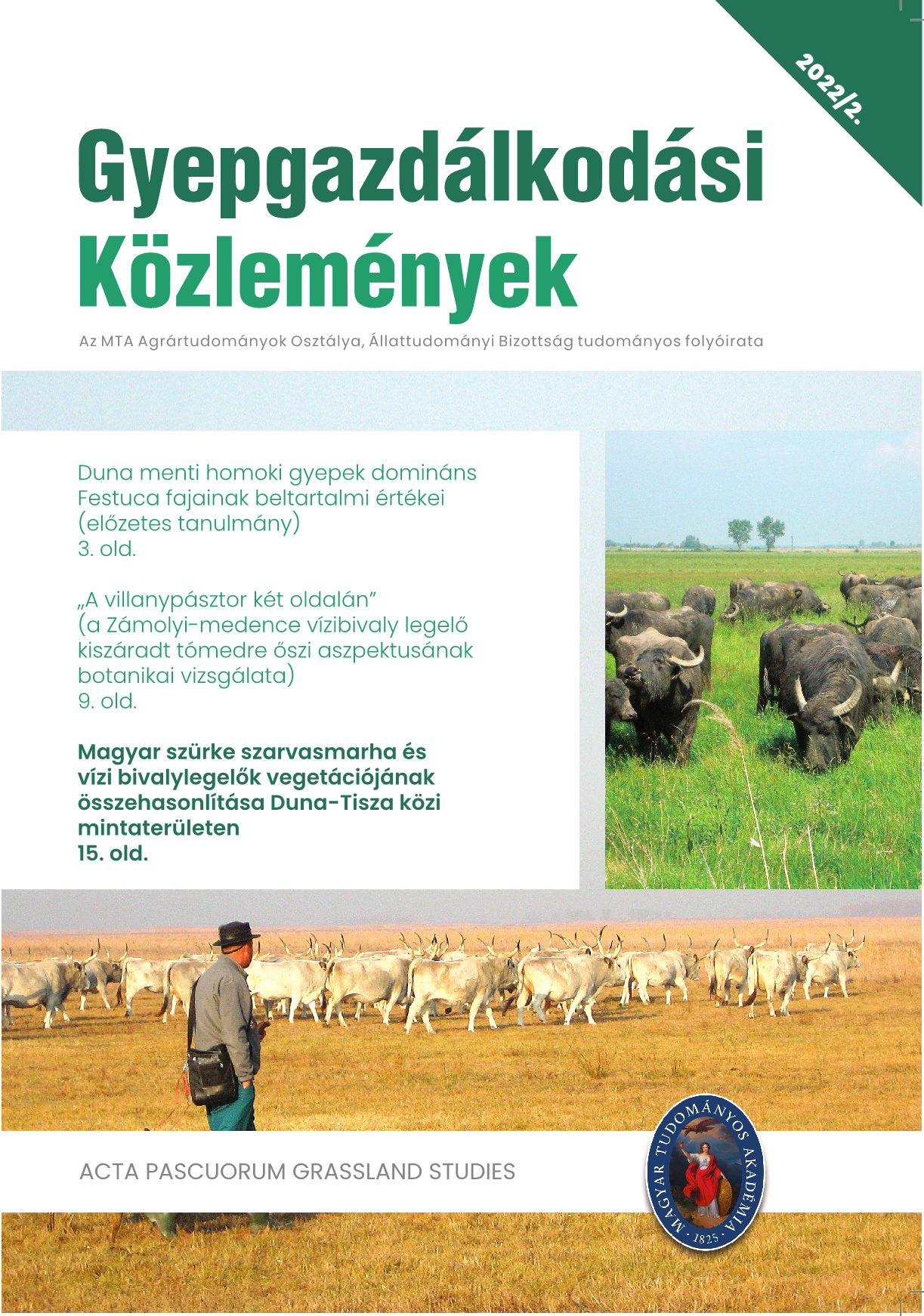Sandy grasslands along the Danube are dominant Content values of Festuca species (preliminary study)
Authors
View
Keywords
License

This work is licensed under a Creative Commons Attribution-NonCommercial-NoDerivatives 4.0 International License.
How To Cite
Abstract
There is a very old practice of grazing livestock in Hungary. Plants of the pastures are the most valuable feed for grazing animals. Supplementation of feed rations with fibre improves the saturation of the digestive tract, resulting in calmer animals and improved animal welfare. Grasses of pastures can be a useful supplement as they contain a lot of digestible fibre. Our purpose was to find out the grassland management values of sandy grasslands dominated by Festuca species along the Danube. We carried out cutting samples along the Danube, from the north-western part of the Little Hungarian Plain, through the sandy plains of the Carpathian Basin, Serbia, Romanian Plain to Bulgaria. The cut samples were analysed in the laboratory of MATE based on Weende analysis. The original dry matter, crude protein, crude fat and crude fibre content, as well as the measurement of fibre fractions (NDF, ADF, ADL) were analysed. The results showed that absolute dry matter, crude fibre and NDF contents were high in all samples. The five samples of Festuca species analysed showed significant differences in dry matter and crude fibre. Festuca wagneri had the highest dry matter content. The highest crude protein content was found in samples of Festuca vaginata, Festuca wagnerii and Festuca rupicola, but the highest crude fibre content was found in samples of Festuca tomanii.

 https://doi.org/10.55725/gygk/2022/20/2/12258
https://doi.org/10.55725/gygk/2022/20/2/12258